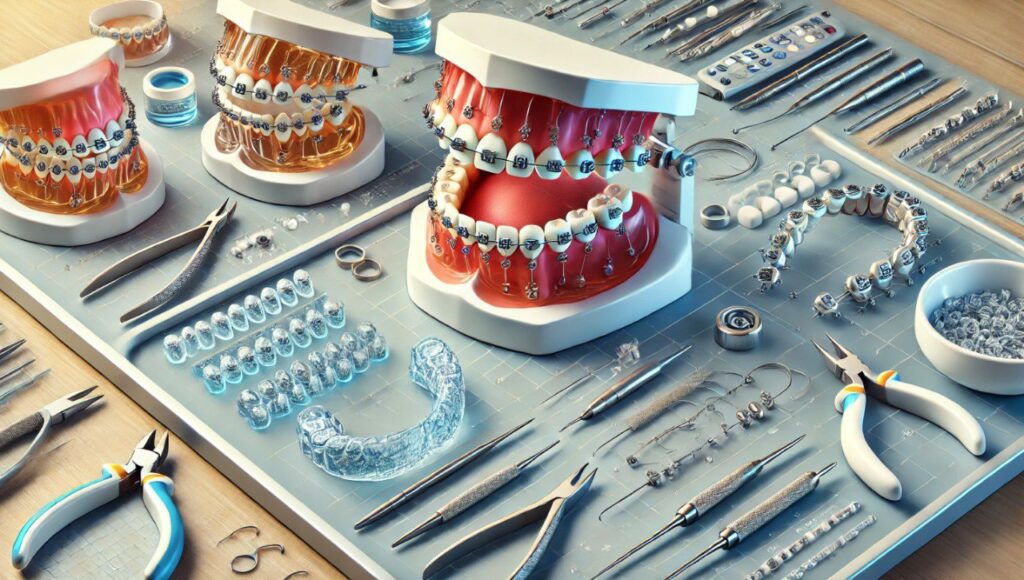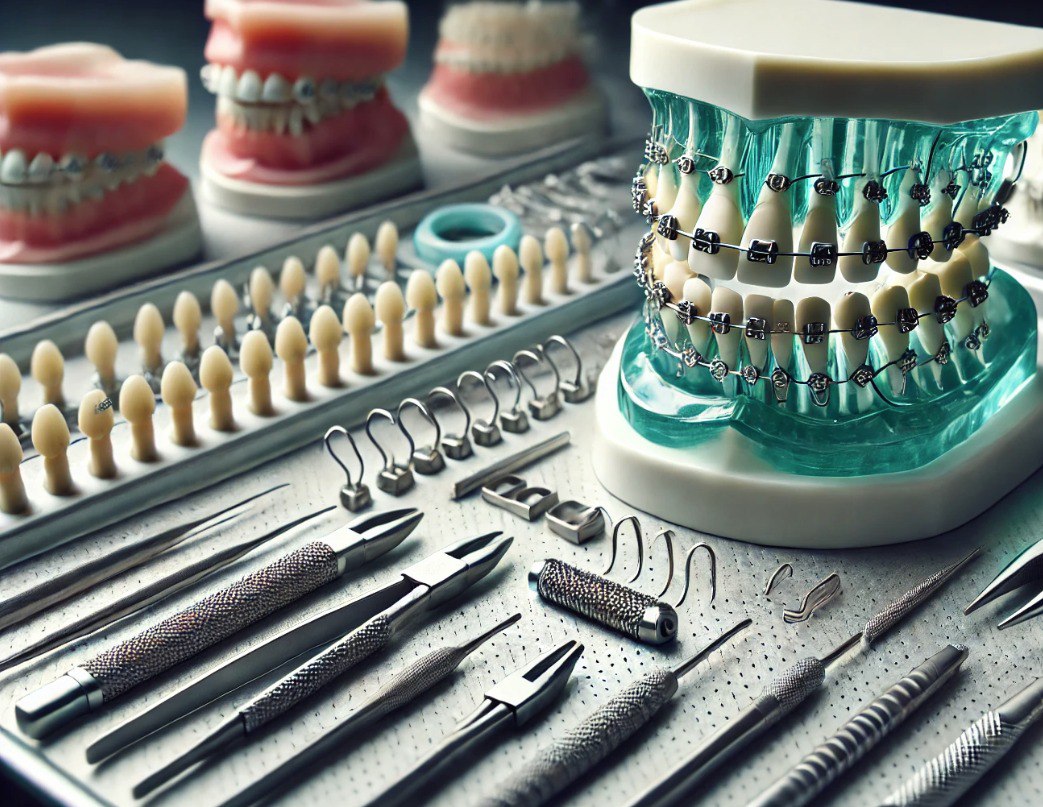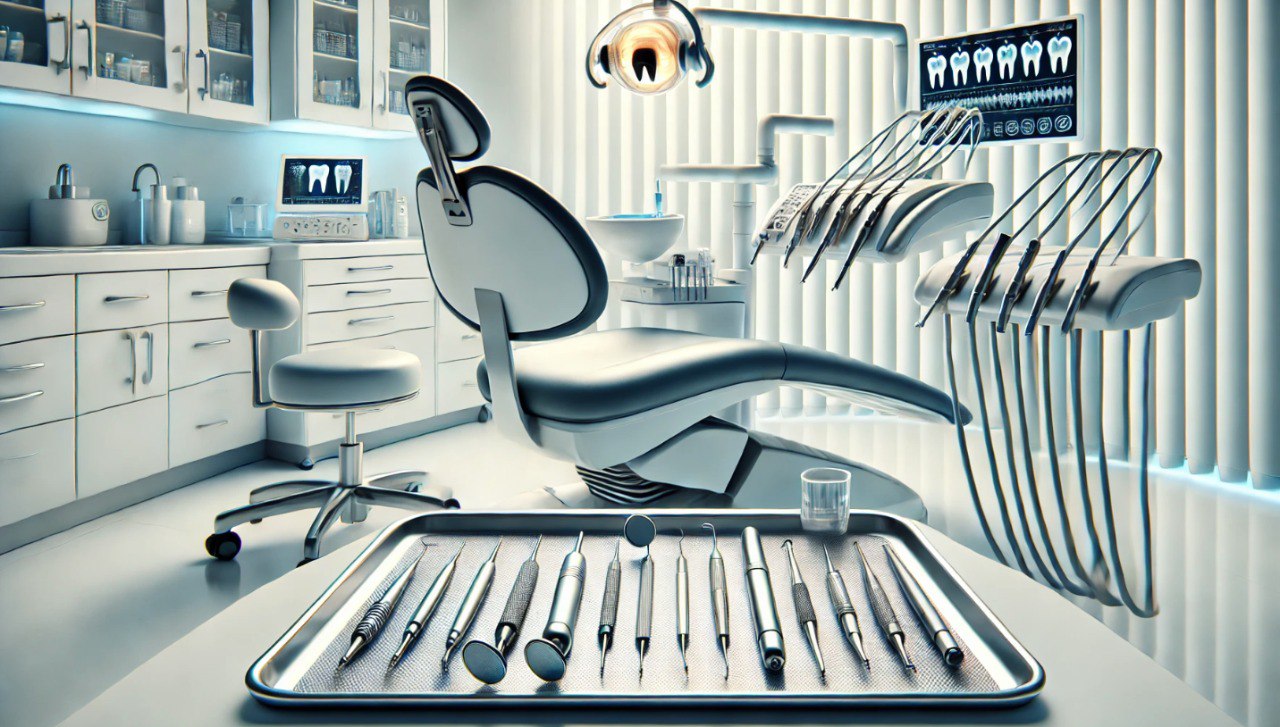
Dental braces have been used for decades to correct misaligned teeth. With advancements in dental technology, different types of braces are now available. At Smile Makeover of LA, we offer a variety of braces to suit your needs. Our Glendale dental office is committed to providing exceptional care and beautiful smiles.
A History of Dental Braces
The history of dental braces dates back to ancient times. In 1728, French dentist Pierre Fauchard introduced the “bandeau” device to align teeth. The modern concept of braces began in the 20th century with the invention of stainless steel brackets. These advancements revolutionized orthodontics, making braces more effective and comfortable for patients.
Dental Braces Before And After
Dental braces can significantly improve your smile by straightening misaligned teeth. Before braces, teeth may appear crowded or crooked, affecting oral health. After treatment, braces create a well-aligned smile, boosting confidence and oral hygiene. The dental braces before and after transformation can be remarkable, improving both aesthetics and functionality.
What Types Of Braces Are There?

There are several types of dental braces designed to fit different needs and preferences. Each type has unique features, and the choice depends on individual goals and comfort. Below, we explore various types of braces and their key characteristics.
Metal Braces (Traditional Braces)
Metal braces or traditional braces are the most common type and have been used for many years. They consist of metal brackets and wires, gradually moving teeth into place.
- Affordable: Metal braces are often the most cost-effective option.
- Durable: They are strong and less likely to break.
- Colorful Options: You can add colorful bands for a fun look.
- Visibility: They are more visible than other types.
- Effective: Suitable for complex dental issues.
Ceramic Braces
Ceramic braces are similar to metal braces but use clear or tooth-colored brackets. This makes them less noticeable on your teeth.
-
- Aesthetic Appeal: Blends with natural teeth for a discreet look.
- Less Noticeable: Ideal for those concerned about appearance.
- Cost: Generally more expensive than metal braces.
- Fragility: More prone to staining and breaking.
- Comfort: May be more comfortable on the gums.
Lingual Braces
Lingual braces are placed behind the teeth, making them invisible from the front. They are customized to fit each patient’s dental arch.
- Hidden Placement: Invisible from the outside.
- Customization: Tailored to individual teeth.
- Complex Installation: Requires specialized orthodontic expertise.
- Comfort: May affect speech initially.
- Cost: Typically more expensive due to customization.
Invisalign (Clear Aligners)
Invisalign consists of clear, removable aligners that gradually shift teeth into position. They are popular for their aesthetic appeal and convenience.
- Removable: Easy to take out for eating and cleaning.
- Invisible: Virtually undetectable when worn.
- Convenience: Requires fewer visits to the orthodontist.
- Discipline Required: Must be worn 20-22 hours a day.
- Limitations: Not suitable for all types of dental issues.
Self-Ligating Braces
Self-ligating braces use a special clip instead of elastic bands to hold the wire in place. They come in metal or ceramic options.
- Reduced Friction: Allows teeth to move more freely.
- Faster Treatment: Often reduces overall treatment time.
- Comfort: May cause less discomfort.
- Cost: Can be more expensive than traditional braces.
- Efficiency: Suitable for mild to moderate cases.
Damon Braces
Damon braces are a type of self-ligating braces that use a slide mechanism to connect wires. They aim to be more comfortable and efficient.
- Comfortable Fit: Reduced pressure on teeth and gums.
- Fewer Adjustments: Requires less frequent orthodontist visits.
- Natural Appearance: Available in clear options.
- Speed: May shorten treatment time.
- Cost: Typically higher due to advanced technology.
Factors to Consider When Choosing Braces
Choosing the right braces involves considering various factors. First, think about your specific dental needs and goals. Consult with orthodontist to understand which type suits your condition. Consider the appearance and comfort of the braces, especially if you’re conscious about aesthetics. Cost is also an essential factor, as prices vary for different braces. Lastly, think about the treatment duration and how it fits into your lifestyle.
Conclusion
Understanding the different types of teeth braces can help you make an informed choice. At Smile Makeover of LA, we provide a range of orthodontic options tailored to your needs. Our dental clinic in Glendale is equipped with the latest technology to ensure top-notch care. Whether you’re considering traditional metal braces or clear aligners, our experienced team is here to guide you. Contact us today to schedule a consultation and start your journey to a beautiful smile.

FAQ
What Type of Braces Are Best for Adults?
Which is the Best Type of Braces?
Which Type of Braces Work Faster?
Which Braces Are Beautiful?
